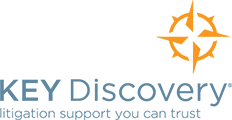
For attorneys, eDiscovery has been a blessing because the days of working primarily with endless stacks of paper are almost obsolete. With today’s software technology, they can have the ESI they need with speed and ease. That doesn’t mean mistakes can’t be made with eDiscovery. In fact, there are some common errors that attorneys make when working with this virtual approach that can be avoided just by following these steps and taking a bit more time to understand the eDiscovery process.
- Not Understanding Categories of Electronically Stored Information.
Having a basic understanding of the eDiscovery process is your first step to success. When requesting ESI, knowing the different types of categories will help. Categories include active data, online data, near-line data, archived data and backup tapes. Pulling and collecting the data can be tedious, so it’s important to have an expert guide you through the accessibility of the different data categories. When requesting ESI or responding to a request, knowing more about the categories will help you understand if a request is reasonable.
- Being Disorganized
An important tip to remember is that while computers and technology are smart, you will need to create a plan to organize your ESI. A good starting point is understanding the data sources you need to collect from and to identify the relevant ESI and preserve it to ensure it cannot be altered or deleted. Powerful all in one softwares do exist which can process, cull, and help analyze, review and produce your evidence. None of this has to be complicated if you have a partner you can rely on. It will help a lot if you have an internal employee or an outside consultant who is familiar with eDiscovery processes and the Federal Rules of Civil Procedure.
- Not Cooperating with Opposition
It’s easy for attorneys to become adversarial but when it comes to eDiscovery working together helps. By preparing and collaborating at the meet and confer conference, the risk of eDiscovery sanctions is minimized. Having both parties on the same page is extremely important for the development of search criteria, eDiscovery demands, and the production export criteria. Transparency is the ultimate goal here between both parties.
- Not Relying on Artificial Intelligence
Many attorneys do not have confidence with the artificial intelligence software within review platforms. If you are in this category, we strongly urge you to reconsider. If you have enough documents to run keyword searches, you should be considering utilizing technology assisted review. Small and medium sized firms can feel confident heading towards large data driven discovery by enabling this useful technology. With the help of a trusted project manager and a proven workflow, the time savings will be great and the process will be judge approved.
photo by Andrea Piacquadio from Pexels
